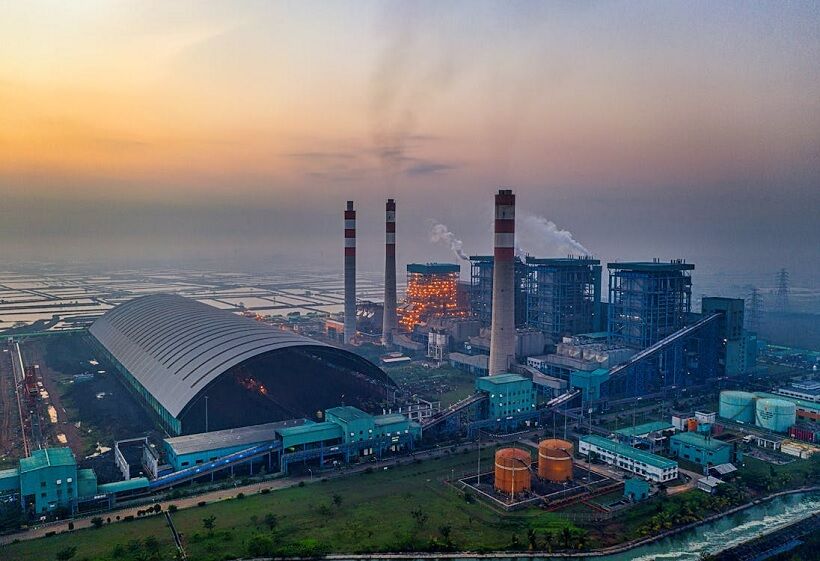Thailand’s revolutionary fight against air pollution

In Thailand, the battle against air pollution is taking a high-tech turn, thanks to innovative solutions like Bosch’s air quality monitoring box. With air pollution posing significant health and environmental risks, it’s reassuring to see technology offering cleaner air solutions. This innovation is a beacon of hope and a testament to Thailand’s commitment to improving life quality.
Current air pollution situation in Thailand
Urban air quality challenges
You’re facing a pressing issue when navigating the bustling cities of Thailand: compromised air quality. Urban areas, teeming with vehicles and industrial activities, are at the forefront of this challenge. Tracking PM2.5, an air pollutant that poses significant health risks, becomes crucial in these densely populated zones.
The constant emission from cars, motorcycles, and buses contributes heavily to the air pollution levels, making daily commutes and outdoor activities potentially harmful to your health. Air quality monitoring innovations in Thailand aim to tackle these urban challenges head-on. These technologies provide real-time data, enabling effective management and mitigation strategies to improve the air you breathe in urban settings.
Industrial pollution concerns
Moreover, the industrial sector adds another layer to the air quality dilemma you face in Thailand. Factories and manufacturing plants, especially outside the metropolitan areas, emit pollutants that affect the immediate surroundings and have far-reaching effects on the overall air quality. Air pollution monitoring in Thailand has become a pivotal tool in identifying and quantifying the extent of pollution originating from industrial activities.
By pinpointing the sources, authorities and companies can implement targeted measures to reduce emissions. Innovations in air quality monitoring play a vital role in safeguarding your environment against the adverse effects of industrial pollution. These efforts are essential in ensuring that the air around you remains clean and that Thailand moves towards a sustainable and healthier future.
Traditional methods of air pollution monitoring

Stationary monitoring stations
In your journey to understanding air quality monitoring innovations, starting with the basics is crucial. Around Thailand, stationary monitoring stations have long been the backbone of tracking air pollution. These fixtures are strategically placed in various locations, capturing continuous data on pollutants like PM2.5. These stations provide a static, but reliable, snapshot of the air quality in their vicinity.
They’re equipped with sophisticated sensors that analyse the concentration of pollutants, offering insights critical for assessing air quality trends over time. The data collected is not only pivotal for local authorities to make informed decisions but also for the public to stay informed about the air they breathe.
Mobile monitoring units
Shifting focus towards a more dynamic approach, mobile monitoring units introduce flexibility in tracking air pollution across Thailand. Unlike their stationary counterparts, these units can move around, covering areas that might be hard to monitor otherwise. This mobility allows for a much broader understanding of air quality conditions. Vehicles equipped with air monitoring equipment traverse the city streets, gathering data on PM2.5 levels and other pollutants.
This method is particularly effective in urban areas, where traffic emissions significantly contribute to air pollution. By deploying mobile units, authorities can gather real-time data, painting a more accurate picture of the air quality across different parts of Thailand. This versatility is instrumental in pinning down pollution hotspots and implementing targeted interventions to mitigate air quality issues.
Innovations in air pollution monitoring technologies
Remote sensing
Remote sensing technology stands as a giant leap forward in tracking PM2.5 and other harmful pollutants. Unlike traditional methods, this innovative approach allows for the comprehensive scanning of large areas from afar, ensuring that no pollutant goes unnoticed.
With its ability to deliver real-time data, you’re now in a position to observe air quality changes as they happen, a crucial step towards proactive pollution management. Thailand is capitalising on this technology’s potential, integrating it into its national air quality monitoring framework to offer a wider, more precise picture of air pollution levels across various regions.
IoT and sensor technologies
The integration of IoT and sensor technologies into air quality management has revolutionized how we track and analyze pollutants like PM2.5. These sensors, often small and discreet, can be deployed across cities, capturing data on air pollutants with remarkable accuracy. This granular data collection method provides an unparalleled insight into pollution trends, enabling targeted interventions.
By harnessing the power of the Internet of Things (IoT), these sensors communicate data in real-time, allowing for immediate response actions to deteriorating air quality. Thailand’s commitment to air pollution monitoring innovations shines through its adoption of these technologies, demonstrating a significant step forward in urban air quality management.
Drones and UAVs
Drones and Unmanned Aerial Vehicles (UAVs) represent the cutting-edge of air pollution monitoring in Thailand, offering a dynamic and versatile solution. Capable of reaching areas that are otherwise inaccessible, drones equipped with pollution sensors can swiftly gather data on air quality. This mobility is invaluable, especially in areas where traditional monitoring stations cannot be easily installed.

By deploying drones, Thailand can pinpoint pollution hotspots with precision, thus enabling more effective and timely pollution control measures. This approach not only exemplifies Thailand’s innovative spirit in combating air pollution but also sets a benchmark for others to follow in the quest for cleaner air.
Collaborative initiatives and partnerships
Government and research institutions
- Joint effort: Government and research institutions work together to improve air quality monitoring.
- Advanced sensor networks: More accurate data collection in cities and rural areas allows for faster response to pollution spikes.
- Tailored solutions: Monitoring systems address Thailand’s specific environmental challenges.
- Research guides policy: Studies by universities inform government actions to combat air pollution.
Private sector involvement
- Tech companies: Develop air purifiers with real-time monitoring using IoT.
- Public-private collaboration: Speeds up innovation and expands air quality monitoring solutions.
- AI & machine learning: Used to predict pollution patterns and prevent air quality emergencies.
- Thailand as a leader: Shows how collaboration tackles air pollution effectively.
Seeking Solutions to Combat Pollution in Thailand? Discover Your Comprehensive Guide to Achieving Cleaner Air and Overcoming PM2.5 Challenges.
Latest Thailand News
Follow The Thaiger on Google News:


























